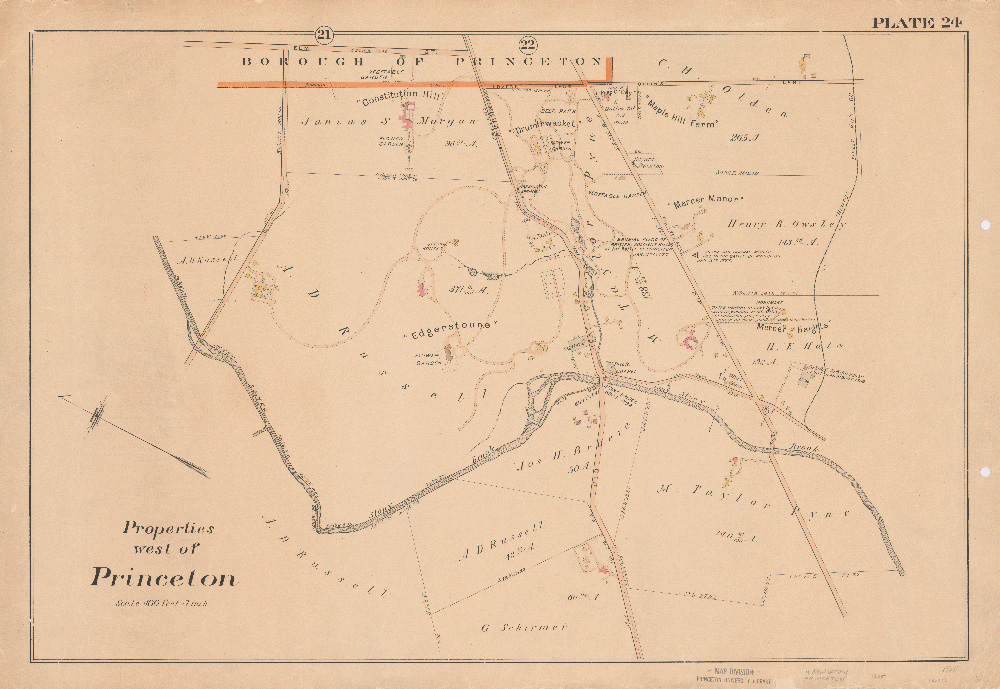3. Gentlemen Experiment With Farming
What’s growing here? Carrots
By 1900, a handful of families owned the vast majority of land in the western section of Princeton Township. Independently wealthy men, like Junius Spencer Morgan, Allan Marquand, Moses Taylor Pyne, and Archibald Russell, each purchased several historic farms to combine into great estates. On these properties, in addition to extensively landscaped gardens, all except one estate owner installed model farms. Model farms allowed these gentleman farmers not only to grow vegetables, like carrots and potatoes, for their household meals but also to experiment with new agricultural techniques, freed from the need to turn a profit. For these men, agriculture was an intellectual and recreational pursuit.
Pyne’s Drumthwacket included a model dairy where a farmer raised champion cows with memorable names, like Alfalfa Farm Flutie and her calf, Flying Horse Bandmaster. Indeed, breeding specialty cattle was a common practice of Princeton’s model farmers. Archibald Russell bred Ayrshire cattle at Edgerstoune and, similarly, in what is today Montgomery Township, Senator John McPherson imported Holstein cows from Europe, the first ever black and white cows in the region.
The model farms also presented examples of state-of-the-art farm facilities. At Edgerstoune, Russell built a poultry plant with an electric feed mill and “test barn” that featured electric fans and concrete.
Gentleman farmers shared their discoveries and research questions at meetings of the Princeton Agricultural Association, which formed in 1867 at Drumthwacket, then the home of former New Jersey Governor Charles Smith Olden. Later, Moses Taylor Pyne would host Association meetings in the same home when it became his estate.
This map, circa 1905, shows the estates of Princeton’s gentleman farmers, including Junius Morgan’s Constitution Hill, Archibald Russell’s Edgerstoune, and Moses Taylor Pyne’s Drumthwacket.
Maps and Geospatial Data, Princeton University Library.

Moses Taylor Pyne constructed a number of outbuildings for his model farm at Drumthwacket. Many, including this farmer’s cottage, were designed by Pyne’s favorite architect, Raleigh C. Gildersleeve, who also designed what is now the Hamilton Jewelers building on the corner of Nassau and Witherspoon Streets.
Collection of the Historical Society of Princeton